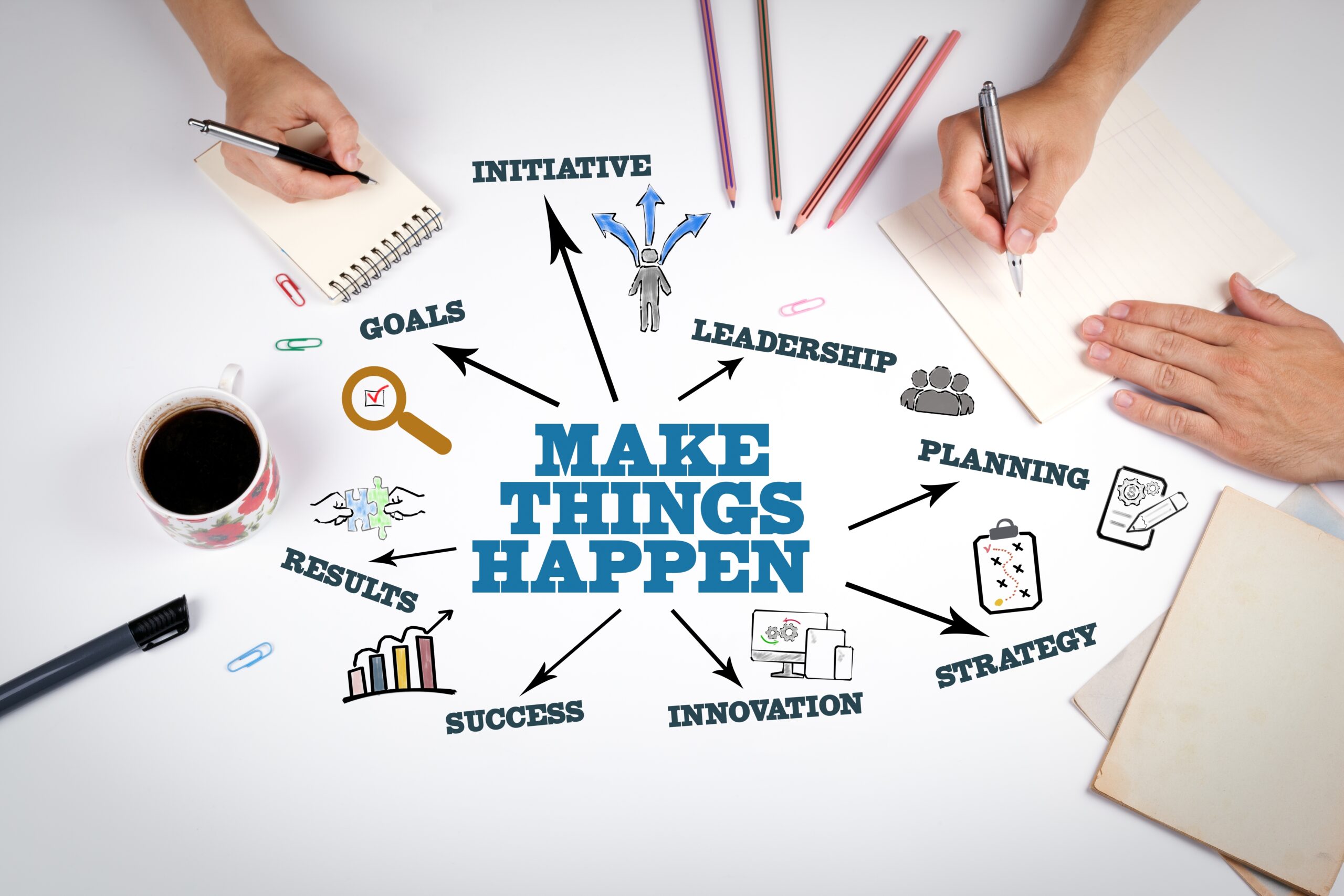Today we are talking about how we bring advisory teams together, help them communicate and keep the boat moving in a (mostly) straight line. Keep in mind, there are a lot of ways you can manage teams and projects. This just happens to be the way we do it at White River. Also note that we are constantly tweaking, modifying and sometimes pivoting altogether. As technology changes, our staff grows, and we continue to grow our resources, we find better ways to do things.
So let me tell you a little bit about how we are working with our families right now.
I’m going to start with how we run White River internally to give you some context. My view is that we run the business of a family just like I run our business. I have advisors to guide me, just as we are part of a team of advisors to a family. We do strategic plans, manage our books, run payroll, etc. All the things that the business of a family also needs.
EOS and Strategic Coach: Tools for Organizational Success
A few years ago, I felt like I struck gold on the business side. I was introduced to the EOS (Entrepreneurial Operating System) through the book Traction, which was recommended by a fellow entrepreneur, and I enrolled in Strategic Coach. Between these two programs, I’ve been able to utilize specific tools and ways of thinking that have put us on a course of continual improvement. I did not hire an integrator to implement EOS. There were just a few of us when we started it; however, I can tell you that we may still hire for that role as we grow. My Strategic Coach (we’ll call her “Coach”) has been a big help teaching me how to integrate the two programs in a way that works for my business. She’s given me several ideas on how to review projects after the fact to assess what went well, what could have gone better, and give everyone on my team a seat at the table to make the process better the next time we do it. Often, when we pause long enough to really consider how we could have done it better, the result creates an opportunity for someone on the team to take ownership of a new piece of the procedure or a reorganization of the procedure. Just as often, it has given us clarity that how we thought something would work didn’t but reveals a better way. And if I’m being honest, more than a few of these lookbacks have resulted in me getting out of my team’s way! If you ever want to be humbled in the best way possible, have your team show you how you got in the way and don’t do it again!
Of course, you can run without these tools or use different tools. These just happen to be the ones I have found that streamline our work and help focus our (and the team’s) attention to what is truly important, so we stumble down fewer rabbit holes.
Because I get asked this all the time, here is how WE do it. I’m not going to describe these tools in depth. If you’re interested, reach out, or pick up the book Traction or any of Dan Sullivan’s books, or join Strategic Coach and put in the work. You’ll be glad you did.
Weekly L10 Meetings: Creating Alignment and Accountability
Each week we have an L10 Meeting. We are small enough that everyone joins. L10s are structured the same way each week. It’s taken some time, but we continue to get better at sticking to our timed sections. We have also added a few things to our L10 meetings to help keep us all on the same page. Things like calendaring (who’s in or out this week) and what each team member’s three crucial results are for the week so that it is clear where their attention is being placed. Quarterly, we set the firm & individual “rocks” (significant priorities or goals that need to be accomplished) for the quarter, which all roll up to the annual and 3-year “rocks” which are created in Q4 for the following year. We also do a straight-talk “rock review” for the previous quarter. We are clinical – it’s black or white – did you get it done or not? If not, why not? At first, this felt uncomfortable, but now we all see it as an opportunity to improve and help each other.
I think the best thing that has come from “rock” setting, reviews, and weekly meetings is the connection the team has to their personal growth, the business growth, and client satisfaction. In this business, mistakes must be few and far between. The learning curve is steep and we all know we have to keep up.
Impact Filters and Strategy Circles: Clarifying Success
Prior to anything getting done – and I mean almost anything – I complete an Impact Filter and sometimes even a Strategy Circle. My team now knows that if I have a great idea, it better be followed up with that Impact Filter so they know what success looks like in my mind. It’s funny how what I think success looks like and what someone else thinks it looks like can be totally different. This tool also allows me to get it out of my head, think through it a little more and sometimes even help me realize that it’s not worth doing at all. As an entrepreneur, I have a ton of ideas. Let’s face it, some are good, others not so much. Rather than sending my team down a path that doesn’t actually help us, this helps me think it out a little more and then get out of their way. How they get to the success (which they know explicitly what that looks like) I don’t particularly care. I also invite those who will be involved in that project to push back, poke holes and ask clarifying questions. Again, the goal is to make us better, not turn in circles because we don’t know where we are going.
Experience Transformers: Learning from Every Project
After each project and quarter, we do an Experience Transformer. This is our lookback to discuss what went well, what worked, what didn’t work and throw ideas on the table to do it better next time. This happens after we get through the onboarding for each client, at the end of each quarter and at regular intervals between me and each employee. As the leader of the company, I need intel and feedback to be and do better myself. This has been above and beyond helpful for me as I continue to grow as a leader.
Translating Internal Systems to Client Management
When a new client is coming on board with us, my team and I architect the game plan and then do an impact filter for each of those milestones. Sometimes that is shared directly with the client, but more often I discuss it verbally with them to make sure I heard what they really wanted and what success looks like to them. Again, just because I think it’s done well doesn’t mean anything if our new client sees success differently. Once we’re on the same page and we’ve done introductions with the rest of the team, we have internal meetings with the family team to discuss the priorities and what success means to them. I share the milestones and overall architecture, we build the project timeline, confirm who outside of us needs to be involved, and then we build the project in our software. We consider this our project kick-off.
Collaborative Project Management with External Advisors
When a project requires outside coordination, we will do a modified L10 meeting with everyone who plays a part of that project plan. I like inviting the other advisors into the planning process from the beginning. They may have information that I don’t or see a different way to get to the same (or a better) result.
The meeting intervals can vary, but it’s incredibly useful to keep everyone on track and complete projects in a timely manner. In real life, everyone has multiple things going on at any one time. The more coordinated we can be with information and follow-through from everyone, the easier it is to get things done. Ultimately, that is the goal of everyone on the team. It is LITERALLY why we as service providers are here.
When a project wraps up, we do an “experience transformer” to discuss how we could have made the process better for everyone. Sometimes the delays couldn’t be avoided. Often, they could have and the next time we have a project with those team members we pull that document back out and talk about how we will proceed with what we now know.
What I must balance here is that not everyone sees the benefit of this process in the beginning – or is carrying some scar tissue from other “attempted coordinations” where a project didn’t go well. In fact, this happens with clients as well. They’ve had a poor experience in the past and can be skeptical that it can go differently. This is absolutely one of those times you need to have the tools in place to get the job done and show them why you are different.
One thing I want to make clear is that none of these tools are meant to be used as micro-management or as a “gotcha.” When they are used correctly, they encourage everyone to be a team player and keep to their part of the schedule. I have found that when I support each advisor in their “zone of genius” with clear information, everyone is happier.
Continuous Improvement: The Path Forward
Depending on your view, this could sound incredibly simplistic or incredibly complicated. It has certainly taken me some time to figure out how to create something that works for us. From there though, it seemed like a natural progression to roll it out to our clients. The more time I spend with other EOS and Strategic Coachers, the more I learn and the better we get. Because, after all, continuous improvement is where I always want to be.
Should you decide to run on EOS or join Strategic Coach to move forward faster, I hope you’ll drop me a line and tell me how it’s going. I wish you the very best as you embark on this journey.
If you’re already using the tools, I would LOVE to connect and know how you’re using them. After all, we can go further when we go together!







